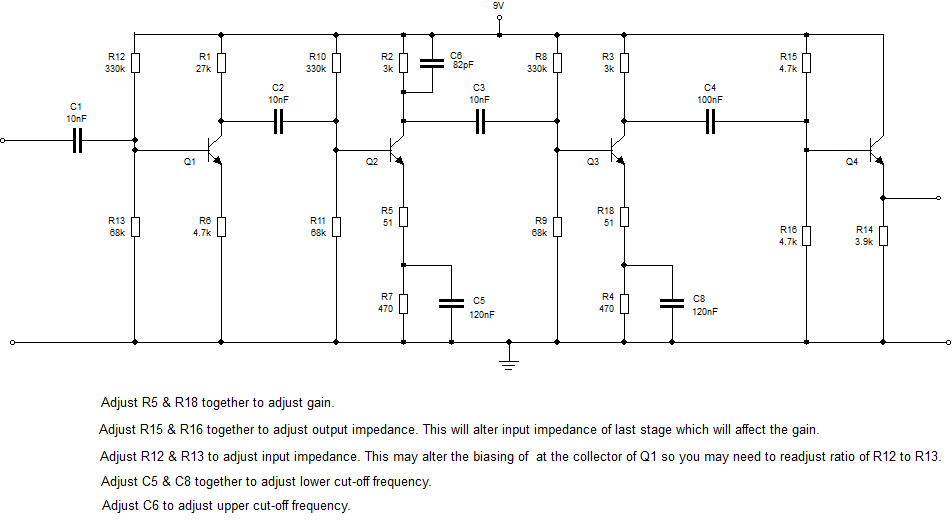I'm currenly taking a course in Analog Circuits in the university and we got a task that requires us to design an amplifier, with characteristics that depend on our ID numbers. My amp should be a voltage amplifier, with the following requirements:
- A = 59 dB
- f_3db_low = 10 kHz, f_3db_high = 1 MHz (BW is approx. 1 MHz)
- slope of rising (in Bode) = 40dB/Dec
- slope of falling (in Bode) = -20dB/Dec
and in the frequency range 0.1 kHz < f < 100 MHz, the input & output resistances should be: R_in = 54 kOhm, R_out = 59 Ohm.
(Due to large R_in and small R_out, the amp is voltage amplifier)
The following circuit I designed satisfies all the conditions are satisfied, except the input & output impedances. I tried a lot of things, but it seems that everything I try just destroys the amplification, which is perfect to me.
I'm attaching a schematic of the circuit, Bode plot of the gain, R_in as a function of f, and R_out as a function of f (in this order):
The circuit: 
Gain plot: 
R_in: 
R_out: 
the circuit is based on CE, CE, CC stages with current mirror to each stage.



